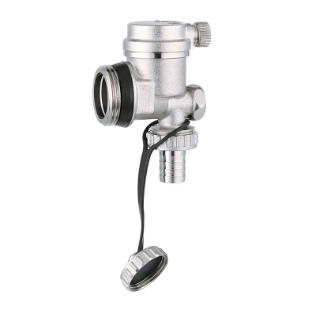Air pressure control is paramount in various industries, from manufacturing plants to commercial buildings. Effective air pressure management ensures the smooth operation of equipment and systems, prevents leaks, maintains optimal working conditions, and maximizes energy efficiency. To achieve this, organizations turn to devices like the brass air vent valve, a robust and reliable solution in controlling and stabilizing air pressure.
The brass air vent valve is a small, yet powerful tool that plays a vital role in regulating the pressure in a system. It is commonly used in HVAC (Heating, Ventilation, and Air Conditioning) systems, process industries, and other applications where maintaining precise air pressure levels is critical.
One of the key advantages of using a brass air vent valve is its durability and resistance to corrosion. Brass, a copper-zinc alloy, is known for its strength and resistance to rust, making it an excellent choice for long-term use. This durability ensures that the air vent valve can handle varying temperatures, different operating conditions, and corrosive environments.
Efficiency is another paramount benefit associated with brass air vent valves. These valves are designed to quickly and effectively release excess air or gas from a system, thus preventing pressure build-up. By doing so, the valve allows for the safe and optimal functioning of equipment and reduces the likelihood of leaks and damages caused by high pressure.
Moreover, brass air vent valves are known for their excellent sealing capabilities. With their high-quality sealing materials, such as rubber or Teflon, they effectively prevent any air or gas leakage when the system is pressurized. This ensures that the desired pressure level is maintained consistently, reducing energy waste and enhancing overall productivity.
Another advantage of the brass air vent valve is its versatility in terms of installation. These valves are typically compact and lightweight, making them easy to integrate into existing systems or install in tight spaces. Additionally, they come in various sizes and connection types, enabling seamless installation with different types of pipes or equipment.
The design of a brass air vent valve also contributes to its efficiency. The valve’s internal components are carefully engineered to ensure smooth and reliable operation. For instance, some models incorporate a float mechanism that automatically opens the valve when excess air or gas is present and closes it once the pressure is balanced. This innovative design eliminates the need for manual adjustment, saving time and effort.
In terms of maintenance, brass air vent valves require minimal attention. Their sturdy construction and high-quality materials make them resistant to wear and tear. Regular inspection and cleaning are usually sufficient to ensure their optimal performance. This low maintenance requirement translates into cost savings for organizations in terms of time, labor, and resources.
In conclusion, the brass air vent valve is an integral device for efficiently controlling air pressure in various industries. Its durability, efficiency, sealing capabilities, versatility, and innovative design make it a reliable and long-lasting solution. Whether in HVAC systems, manufacturing plants, or process industries, the brass air vent valve contributes to the smooth operation of equipment, prevents leakage, ensures optimal working conditions, and maximizes energy efficiency. By investing in a brass air vent valve, organizations can effectively regulate air pressure, leading to enhanced productivity and cost savings in the long run.
Post time: Nov-14-2023
